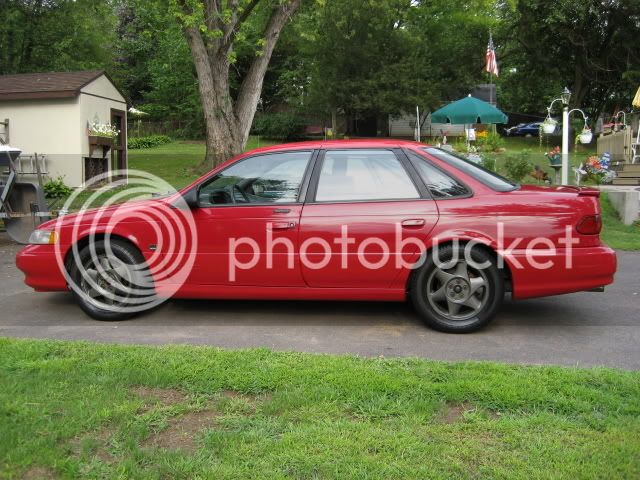Here's my (weak) understanding of it:An inline 4 cylinder 4 stroke engine is not really the smoothest crankshaft configuration out there. In fact it's pretty bad. To keep the firing cylinders even spaced means that 2 pistons will be at TDC when 2 pistons are at BDC. That means there will be a large primary imbalance in that reciprocating mass equivalent to an inline 2 cylinder.
Sorry 'Fred W', not true. The "common" in-line four stroke design you describe has perfect primary balance. In fact, the parallel-twin four stroke with a 180* crankshaft has perfect primary balance; but, due to the spacing between the cyclinders, there's often a pretty serious 'rocking couple' that ends-up as vibration. On an in-line four (like the FJR's) two parallel twins together -- the 'rocking couples' are in opposite directions and tend to cancel out.
Having a V4 in the Honda ST allows them to have reciprocating masses on an angle to each other and reduces the primary imbalance vibration (before counterweights) somewhat.
Not quite: A 90* V-twin can be given perfect primary balance by counter-weighting all the rotating masses and the reciprocating masses on only one cylinder. Yet, without both rods on a single throw, a 'rocking couple' still exists. A V-four can be somewhat better with regards to balance (without an ancillary balancer, that is).
A smoother crankshaft configuration would be an inline 3 cylinder (or 6 cylinder) engine where the masses are spread evenly around the crank rotation.
With the in-line six four-stroke (inherently well balanced), it's because both the primary forces (once per revolution) and secondary forces (twice per revolution) are in-balance. With the four cylinder in-line, it's the out-of-balance secondary forces (caused be the non-symmetrical motion of the piston -- and compounded by a relatively short connecting rod) that conspire to cause in-line four 'buzz'.
A boxer engine is different because the horizontally opposing cylinders have inertial masses that are equal and opposite, canceling each other out. But the boxer twin's rotating crankshaft weight doesn't (can't) cancel so there are still some major vibrations there.
It's fully possible to counterweight a flat-twin crankshaft for all of the rotating masses (usually, not needed) and part of the reciprocating mass. But, it's the 'rocking couple' that causes them to 'buzz'.
Now put three boxer twins side by side and spaced on the crankshaft like the inline 3 cylinder and what do you have? A Goldwing.
True (tho, there's still a 'rocking couple') -- yet not all three cylinder four-strokes are of the 120* crank configuration (120* cranks are often saddled with a high-speed "whip" and their balance falls roughly midway between a 180* twin and an in-line four.
There are some 'flat-crank' three cylinder engines (two up -- one down crank-throw arrangement) and Ferrari has had very successful 'flat-crank' V-8s.
All this may be moot with respect to balance due to the application of engine balancers (especially, gear-driven balancers) commonly found on modern engines. Ducati (on the SuperMono) and BMW/Rotax (on their new 'F'-twins) have even gone so far as to employ rotating mass-lumps attached to the crankshaft to approximate smoothness.
Then we come to Yamaha's new R-1: which, apparently, has a crankshaft/engine firing like their M-1 MotoGP racers (which appear to have superb low-rpm accelleration). These in-line fours have staggered crankpins and fire more like multiple V-twins.
Staggered crank throws are not new -- Honda's tried it for years on cruisers -- but, it does show that (when it comes to engine design) just about anything is possible.































































